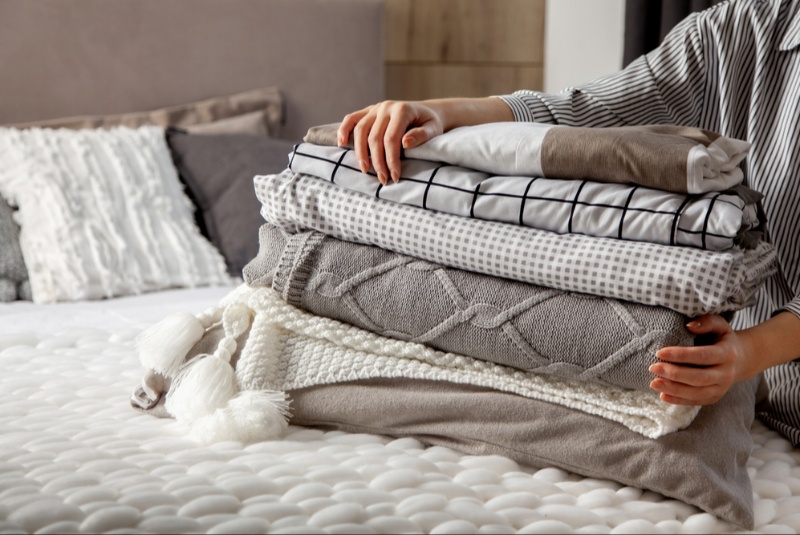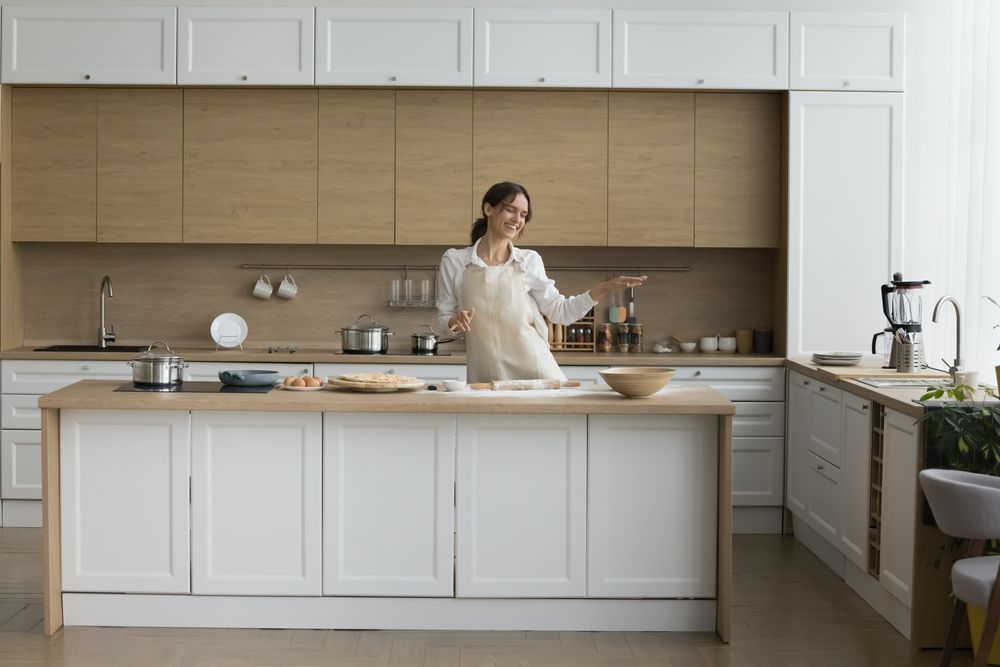In the quest to furnish your home with quality linens, balancing aesthetics, comfort, and practicality is key. With an overwhelming variety of options, from fabric types to finishes, making informed choices becomes essential.
Step 1: Know Your Fibers
Understanding fabric types is crucial when shopping for linens. Cotton, especially Egyptian and Supima, is well-regarded for its softness, durability, and breathability. Linen, made from flax, offers a textured, cool feel and eco-friendly appeal, ideal for warmer climates. Synthetics like polyester are typically more affordable and wrinkle-resistant but may lack the comfort and breathability of natural fibers.
Tip: Blended fabrics, such as cotton-polyester, can offer a balanced mix of natural comfort and synthetic durability, giving you the best of both worlds at a more accessible price.
Step 2: Unravel the Thread Count Mystery
Thread count is often misunderstood as the primary measure of quality, with many assuming that a higher count equals better quality. In reality, a balanced range between 200 and 800 is generally ideal for durability and comfort. Extremely high thread counts may lead to a heavier, less breathable fabric, which can feel overly warm.
Tip: For a blend of softness and strength, aim for linens with a thread count within the 200-800 range. For sheets, a percale weave with a 300-thread count is crisp and cool, while sateen with around 400 offers a soft, luxurious feel.
Step 3: Weaves that Woo
The weave of the fabric influences not only the look but also the feel and durability of the linen. Percale weaves, with their traditional grid-like structure, deliver a light, crisp texture, while sateen weaves create a smooth, silky finish. Understanding these differences helps align your choice with your comfort preferences and climate.
Tip: If you prefer a cooler feel, opt for percale. For a more luxurious, softer feel, choose sateen. Those who live in warmer areas may appreciate percale’s breathability, while sateen’s warmth can be ideal for cooler months.
Step 4: Size and Dimensions Matter
To avoid buying linens that don’t quite fit, measure your bed, table, or other surfaces accurately. While "King" or "Queen" sizes are standard terms, dimensions can vary by brand.
Tip: Always review the specific dimensions listed in the product description to ensure a perfect fit, especially for fitted sheets and mattress pads.
Step 5: Choosing Colors and Patterns
Linens are a key component of your interior decor. Selecting the right colors and patterns can enhance your room’s ambiance. Classic white linens bring timeless elegance, while bold colors and patterns add vibrancy and personality.
Tip: Consider your room’s color scheme and overall aesthetic. Neutral linens complement most decor, while accent pieces in bold colors or patterns can create a stylish contrast.

Step 6: Functional Features for Added Comfort
Modern linens come with functional features like stain resistance, moisture-wicking, and hypoallergenic treatments. Hypoallergenic materials are especially helpful for those with allergies, while moisture-wicking fabrics are beneficial in warmer climates or for hot sleepers.
Tip: Look for hypoallergenic options if you have sensitive skin or allergies. Moisture-wicking properties are ideal for bedding in warmer climates, keeping you comfortable and dry.
Step 7: Budgeting Wisely for Quality
While quality linens are often worth the investment, that doesn’t mean you need to overspend. A few high-quality sets can be more valuable than an abundance of lower-quality items.
Tip: Balance your budget by prioritizing quality over quantity. A set of durable, comfortable sheets will likely outlast multiple sets of cheaper ones, offering better value in the long run.
Step 8: Environmentally Conscious Choices
Choosing eco-friendly linens supports sustainable practices in the textile industry. Look for certifications like OEKO-TEX® or GOTS, which ensure products are made without harmful chemicals and are environmentally responsible.
Tip: Supporting sustainable choices often means choosing products that are made with organic fibers or have certifications, giving you peace of mind about both quality and environmental impact.
Step 9: Reviews and Recommendations
Customer reviews and recommendations are invaluable when making purchasing decisions. Reviews provide real-world insights into the comfort, durability, and quality of linens, while personal recommendations offer trusted advice.
Tip: Look for reviews that reflect your own priorities—whether it's softness, durability, or easy maintenance. Friends or family members may also provide guidance based on their own experiences with specific brands or types.
Selecting the right home linens involves a blend of personal preference, functional needs, and quality assessment. By understanding fabric types, thread counts, and unique features, you’ll be equipped to make choices that enhance both comfort and style in your home. With these considerations in mind, your linen shopping journey will yield results that support restful sleep, elegant decor, and lasting quality. Let this guide be your trusted companion as you explore the world of home linens, finding pieces that transform your space into a true haven of comfort and beauty.




